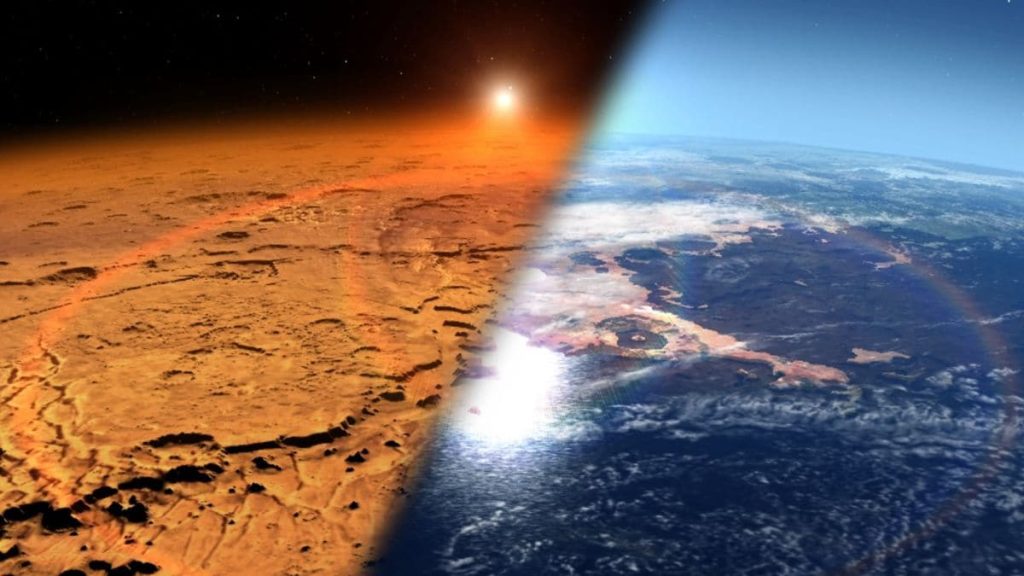Mars used to be a wetter world. Scientists have long pointed to evidence like dried-up riverbeds and ancient lake basins. For that much water to exist, Mars would have needed a thicker atmosphere — one that could hold in heat and pressure. But today, Mars is cold, dry, and barely has any air. For the first time, NASA’s MAVEN spacecraft has directly observed a long-suspected process responsible for stripping away Mars’ atmosphere — sputtering. Understanding when and how that atmosphere disappeared is crucial for reconstructing the planet’s climate history and assessing its past potential to support life.
Sputtering
According to MAVEN’s findings from a new study, sputtering is a significant mechanism in atmospheric escape. In this mechanism energetic particles from solar wind collide with Mars’ upper atmosphere. These collisions, in principle, transfer enough energy to neutral atoms and help break them free from the planet’s gravitational pull, flinging them into space.
“It’s like doing a cannonball in a pool,” Shannon Curry, the principal investigator of the MAVEN mission at the University of Colorado Boulder who led the new study, said in a statement. “The cannonball, in this case, is the heavy ions crashing into the atmosphere really fast and splashing neutral atoms and molecules out.”
Using nine years of data, scientists created detailed maps of argon. The study also revealed that sputtering happens at a rate four times higher than previous models predicted, and intensifies during solar storms.
This suggests the process was far more extreme billions of years ago, when the young sun was more active and Mars had already lost its magnetic field. Without magnetic protection, the planet’s atmosphere was vulnerable to relentless solar wind. This accelerated the loss of atmosphere and leading to the disappearance of surface water.


